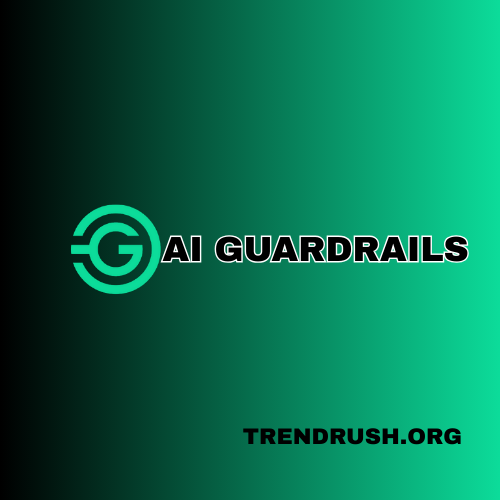Physical Address
304 North Cardinal St.
Dorchester Center, MA 02124
Physical Address
304 North Cardinal St.
Dorchester Center, MA 02124

As artificial intelligence (AI) continues to evolve, its impact on various industries—from healthcare to finance, marketing, and content generation—has grown significantly. While AI brings innovation and efficiency, it also presents ethical, legal, and security risks. This is where AI guardrails come in.
AI guardrails refer to a set of predefined policies, rules, and frameworks that help ensure AI applications align with ethical standards, regulatory requirements, and human values. Whether mitigating bias, preventing harmful content, or ensuring compliance, these guardrails serve as crucial safeguards in AI deployment.
In this blog, we’ll explore what AI guardrails are, their importance, key examples, and how they guide human decision-making in the AI era.
AI guardrails are mechanisms that ensure AI systems operate safely, responsibly, and within established guidelines. These guardrails can be implemented at various levels, including data inputs, processing algorithms, and output validation, to prevent unintended consequences.
By implementing these guardrails, organizations can foster trust in AI-driven processes and avoid reputational and legal risks.
AI guardrails are essential for various reasons:
AI can unintentionally reinforce biases, generate harmful content, or make incorrect decisions. Guardrails help mitigate these risks by filtering outputs and refining training data.
Without ethical boundaries, AI systems can perpetuate misinformation, discriminatory practices, or unethical decisions. Guardrails help enforce responsible AI practices.
Governments worldwide are implementing stricter AI regulations. AI guardrails ensure compliance with laws and policies, reducing legal risks for organizations.
For AI-driven applications to be widely accepted, users need to trust their outputs. AI guardrails help maintain credibility and transparency in AI-generated results.
AI systems often make automated decisions in high-stakes areas such as finance, healthcare, and law enforcement. Guardrails help ensure these decisions are fair, well-informed, and justifiable.
Over time, AI models can drift due to new data inputs or environmental changes. Guardrails help monitor performance and recalibrate models to prevent unintended shifts in behavior.
Guardrails AI is a leading platform designed to help developers implement AI guardrails efficiently. It provides tools for real-time monitoring, input/output validation, and structured data generation.
Guardrails AI is widely used to ensure safer and more reliable AI applications.
AI models such as ChatGPT and DALL-E implement content moderation guardrails to prevent offensive, biased, or misleading information from being generated. These models use a combination of rule-based filters, reinforcement learning, and human oversight to refine their outputs.
Financial institutions use AI guardrails to prevent algorithmic biases in loan approvals, fraud detection, and stock trading predictions. Meanwhile, healthcare organizations rely on guardrails to ensure patient data privacy, improve diagnostic accuracy, and prevent medical misinformation.
Self-driving cars use AI to make real-time driving decisions. Guardrails in AI-powered vehicles help prevent unsafe maneuvers, enforce speed limits, detect pedestrians, and ensure compliance with traffic laws.
AI is increasingly being used for threat detection and cybersecurity defense. Guardrails ensure that AI-driven security tools do not mistakenly flag legitimate activity as malicious or fail to detect sophisticated cyber threats.
Two major AI guardrail frameworks are Guardrails AI and NVIDIA NeMo Guardrails. While both aim to ensure safe AI applications, they differ in implementation.
Both solutions play a crucial role in making AI safer and more trustworthy.
Beyond AI models, guardrails also influence human decisions by:
By implementing AI guardrails, organizations can make better-informed, ethical, and responsible decisions.
As AI adoption grows, so do concerns about its risks and ethical implications. AI guardrails are essential tools for ensuring that AI operates safely, responsibly, and within the boundaries of legal and ethical frameworks.
From platforms like Guardrails AI to industry-wide best practices, these safeguards help organizations build trust in AI while minimizing potential harms. By prioritizing AI safety and compliance, we can create a future where AI enhances human capabilities without compromising security, fairness, or ethics.
The future of AI depends not just on its capabilities but on the guardrails we put in place to guide it. With responsible implementation, AI can be a powerful force for good while avoiding unintended consequences.